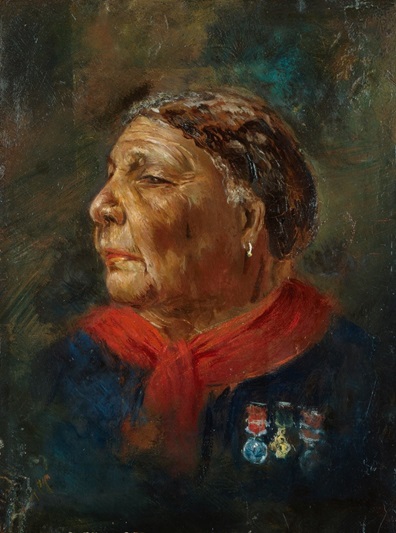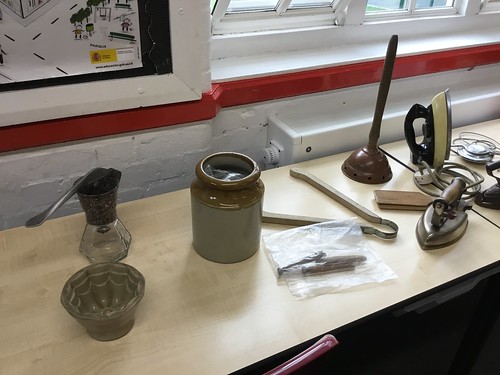Brent Museum and Archives are excited to present Coming Home, an online exhibition produced in partnership with the National Portrait Gallery. The National Portrait Gallery has been collecting portraits of individuals who have made a significant contribution to British life and history since 1856.
Coming Home has been made possible by the National Portrait Gallery, the Department for Digital, Culture, Media and Sport, generous contributions from the Thompson Family Charitable Trust and funds raised at the Gallery’s Portrait Gala in 2017.

(Image: Mary Seacole by Albert Charles Challen, 1869 © National Portrait Gallery, London)
Coming Home is a major project which sees the National Portrait Gallery lend 50 portraits of iconic individuals to places across the UK with which they are most closely associated. In this exhibition we explore the life of Mary Seacole, who was buried in St Mary’s Catholic Cemetery, Kensal Green following her death in 1881.
Due to current restrictions, the portrait of Mary Seacole is unable to be on show in Brent Museum & Archives.
Discovered in 2002 by biographer Helen Rappaport, Mary’s portrait dates from the last period of her life, when she was in her sixties. She wears a traditional Caribbean scarf and three roughly delineated medals commemorating her involvement in the Crimean War (1854–6). The medals are miniature or ‘dress’ versions of official decorations, obtainable from military tailors and commercial jewellers.
Wonderful Adventures in Many Lands
“I am a Creole, and have good Scotch blood coursing in my veins
– Mary Seacole, 1857
Mary was born in 1805 in Kingston, Jamaica. Her father was a Scottish solider and her mother, a Jamaican owner of a boarding house called Blundell Hall. Throughout her childhood, she acquired a knowledge of nursing and traditional Jamaican medicine from her mother.
Despite a series of personal tragedies, including the destruction of Blundell Hall in a fire in 1843 and the death of her husband and mother in 1844, Mary continued to work as a nurse and took on management of the newly restored Blundell Hall. She began to establish her reputation through the successful treatment of cholera patients during the Jamaican epidemic of 1850 and later in Las Cruces, Panama.
no sooner had I heard of war somewhere, than I longed to witness it
– Mary Seacole, 1857
Following the outbreak of the Crimean War in 1853 Mary was keen to provide her services to those on the battlefront and approached the British War Office for sponsorship to travel to Crimea. However, she was unsuccessful in her application.
Determined to reach her destination, she entered into a business partnership with Thomas Day, who was a superintendent at the New Granada Mining Gold Company and a distant connection of her late husband. With Thomas’ help, Mary was able to set sail for the army camp at Balaklava in 1855 and even sent business cards ahead of her arrival to announce her intention to open an establishment for the soldiers called ‘The British Hotel’.
The British Hotel
“…acknowledged to be the most complete thing there… you might get everything at Mother Seacole’s, from an anchor down to a needle”
– Mary Seacole, 1857
Having arrived at Balaklava Mary established The British Hotel, which served as an officer’s club, a canteen for soldiers and a base for her medical practices. Soon after this she began tending to the wounded and providing refreshments to those on the battlefront, and claims to have been the first woman on the front line at Sebastopol.
Through illustrated reports by The Times journalist William Howard Russell, writing from the Crimea, she became a familiar figure to British newspaper readers.
“I have seen her go down under fire with her little store of creature comforts for our wounded men, and a more tender or skilful hand about a wound or broken limb could not be found among our best surgeons. I saw her at the assaults on Redan, at the Battle of Tchernaya, at the fall of Sebastopol, laden … with wine, bandages and food for the wounded or the prisoners.”
– William Howard Russel
Following the end of the war Mary ran into financial difficulties. She had invested a lot of money in travelling to the Crimea and building The British Hotel, and unfortunately could not recover any of these expenses. After returning to England she was declared bankrupt in 1856 and funds were set up to support her through the British press. She also released her autobiography Wonderful Adventures of Mrs. Seacole in Many Lands in 1857 but ultimately this was not enough to pay for her living costs in London and she returned to Jamaica in 1859.
Eventually Mary returned to London in 1865, where she lived for the rest of her life. She died in 1881 and was buried in St Mary’s Catholic Cemetery, Kensal Green.
Despite the fame she had enjoyed during her lifetime, she was largely forgotten for decades until the research and development of black and Asian history from the 1970s which has given her a central place in British history. Seacole was posthumously awarded the Jamaican Order of Merit (1991) and voted the greatest black Briton (2004).
How do we engage with Mary’s story today?
Through Mary’s story, we examine recurring themes of cultural identity, place and home. Healer, Businesswoman, Author and Traveller are just some of the ways in which we describe Mary, but how did she view her own identity? Where did she call home?
To further engage with these ideas, Brent Museum and Archives worked with Byron Court Primary School. The children learned about Mary’s story, how she saw her own identity and where she felt was home. They explored artefacts and photographs of homes in the past using the Houses from Brent’s Past loans box.
To explore the Houses from Brent’s Past activity online click on the photograph album below.
The children reflected on their own cultural identities and where they call home. They spoke about personal experiences and aspects of their heritage that contribute to their individual cultural identities.
To read through the children's personal reflections and a selection of their poetry on the theme of Home click on the album below:
Hear more from the children and explore Mary’s story for yourself in our project film, produced by John Malipol for Brent Museum and Archives.
Learn about the extraordinary discovery of the portrait in 2002 with this illustrated talk by Helen Rappaport, where she explains how she identified Mary Seacole and how she uncovered the life of its

